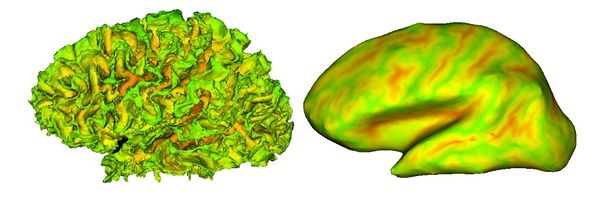Difference between revisions of "DBP:Autism"
m (Update from Wiki) |
m (1 revision imported: "pages" articles) |
(No difference)
| |
Latest revision as of 23:53, 1 June 2017
Home < DBP:AutismAutism Solutions

|
|
Longitudinal MRI Study of Early Brain Development in Neuropsychiatric Disorder-Autism
The primary goal of the University of North Carolina DBP is to learn more about autism by examining cortical thickness patterns in the early developing brain. Increasing evidence indicates that brain volume in children with autism is enlarged relative to normal controls. Whether these differences are due to increased cortical thickness or increased cortical surface area, however, is less clear. Studies of cortical growth during early brain development have been limited because existing tools for measuring brain volume are designed for the mature brain. A collaborating center of the NIH-funded Neuroimaging Study of Autism, clinical researchers at UNC already had acquired MRI data from a longitudinal sample of toddlers with autism, along with a comparison group of age and developmentally matched controls. NA-MIC had the inherent capability in 3D Slicer to produce cortical thickness measures for both individual and group analysis that could be developed for the pediatric population. Over the past several years, UNC has worked closely with NA-MIC computer scientists and software engineers to develop and deploy an end-to-end solution for measuring cortical thickness using data from MRI scans of toddler brains. This module, called ARCTIC (Automatic Regional Cortical ThiCkness) provides end-users with complete capability to perform individual regional cortical thickness analysis in the early developing brain.